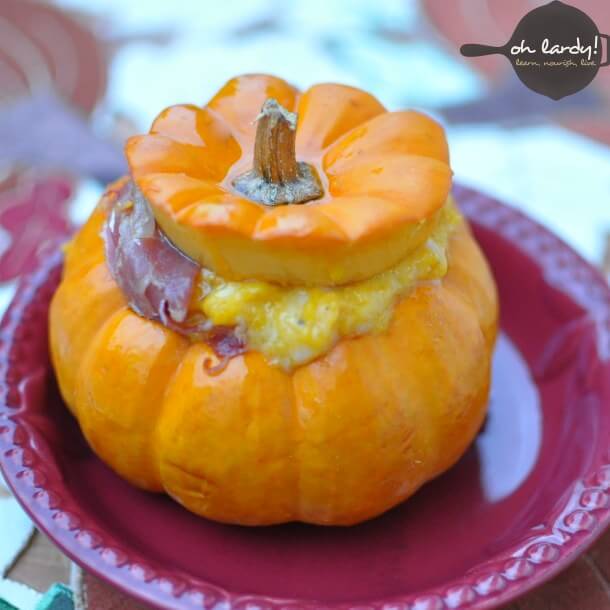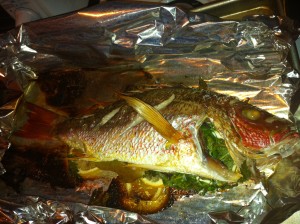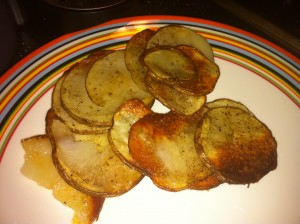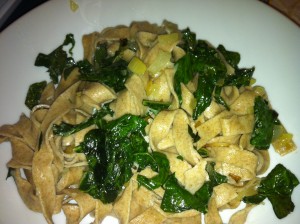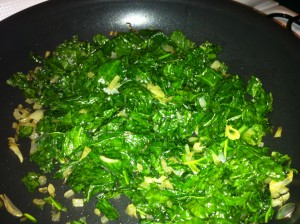Why bother to make your own stock from scratch? Easier to use it from the tetra-pak, aluminum can, or make it from a bouillon cube, right? I don’t disagree, and in a pinch, I will do the same. And not to go all Martha Stewart on you, but I will give you my Top 3 Reasons for going the extra mile for this “pantry” staple:
- Flavah, flavah, flavah
- Ready to use when you need small quantities
- Savings
And if I had to give you only one reason, it would really be flavor. Using homemade stock in soups, risottos, and sauces has a dramatic impact on the taste of your final product. It adds depth and savoriness, and also a LOT less sodium than any pre-packaged variety. Also, store bought vegetable stock (for vegetarians and vegans) usually leaves something to be desired when it comes to flavor.
I will admit that it does require some advance planning and some effort on your part, but you will reap the benefits next time you make a pot of soup. Like any staple, when you make a batch of homemade stock, it is to put up. The recipe below (or any variation) freezes well. Once cool, pour broth carefully into ice cube trays, freeze, then pop out and store in Ziploc freezer bags (several per bag). The recipe makes an excellent base for all your vegetarian winter meals. I used about 1/3 of last week’s batch the same evening for my Leek & Shiitake Mushroom Risotto. Stay tuned for details.
I’ll spend a moment on Reasons #2 & #3 and stick with the soup example. If you aren’t making soup every night, you probably won’t go through an entire carton of stock. So, perfect to use 2 or 3 ice cubes of homemade Vegetable Stock that will be stored away in your freezer. Since the flavor is super-concentrated, you can use about 1/2 the quantity needed and add water to dilute. As for savings (reason #3), I can guarantee that using up the past-their-prime veggies in your fridge and cupboard will cost less than purchasing cans or cartons of ready-made stock. If you are a planner, you can save vegetable peels in your freezer to use later for stock preparation. I admit that I have never had my act together enough to do this, but have thought about it.
DIY Vegetable Broth – Basic Recipe
2 tablespoons extra virgin olive oil
2 carrots, chopped
1 onion, chopped
1 celery stalk, chopped, include some leaves
5 -10 cloves garlic, roughly chopped
5 to 10 white mushrooms, halved or sliced (Optional)
Vegetable peelings or scraps (think green tops from leeks, potato peels, carrot peels)
10 to 20 parsley stems or stems with leaves
Kosher Salt
10 Whole pepper corns
1. Put the oil in a deep skillet or broad saucepan or casserole over medium high heat. When hot, add the carrots, onion, celery, and garlic. Cook without stirring for about 5 minutes, then stir once or twice and cook until the vegetables begin to brown. (If you have more time, brown them well, stirring only infrequently.)
2. Add the parsley, mushrooms (and any other vegetables), 8 cups water, and some pepper. Bring to a boil, then adjust the heat so the mixture simmers steadily but gently. Cook for at least 30 minutes until the vegetables are very tender, up to an hour if you have time. The soup will reduce, that’s ok.
3. Strain well, pushing down on softened vegetables to release the maximum amount of liquid, before using or storing. Allow to cool completely before freezing in ice cube trays. Can store in refrigerator for up to a week.
Chime in if you’ve ever made your own homemade stock and why – vegetarian or otherwise.
